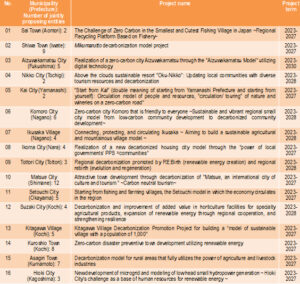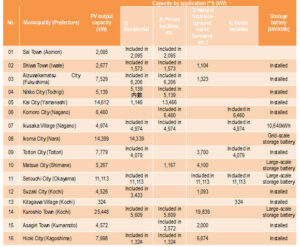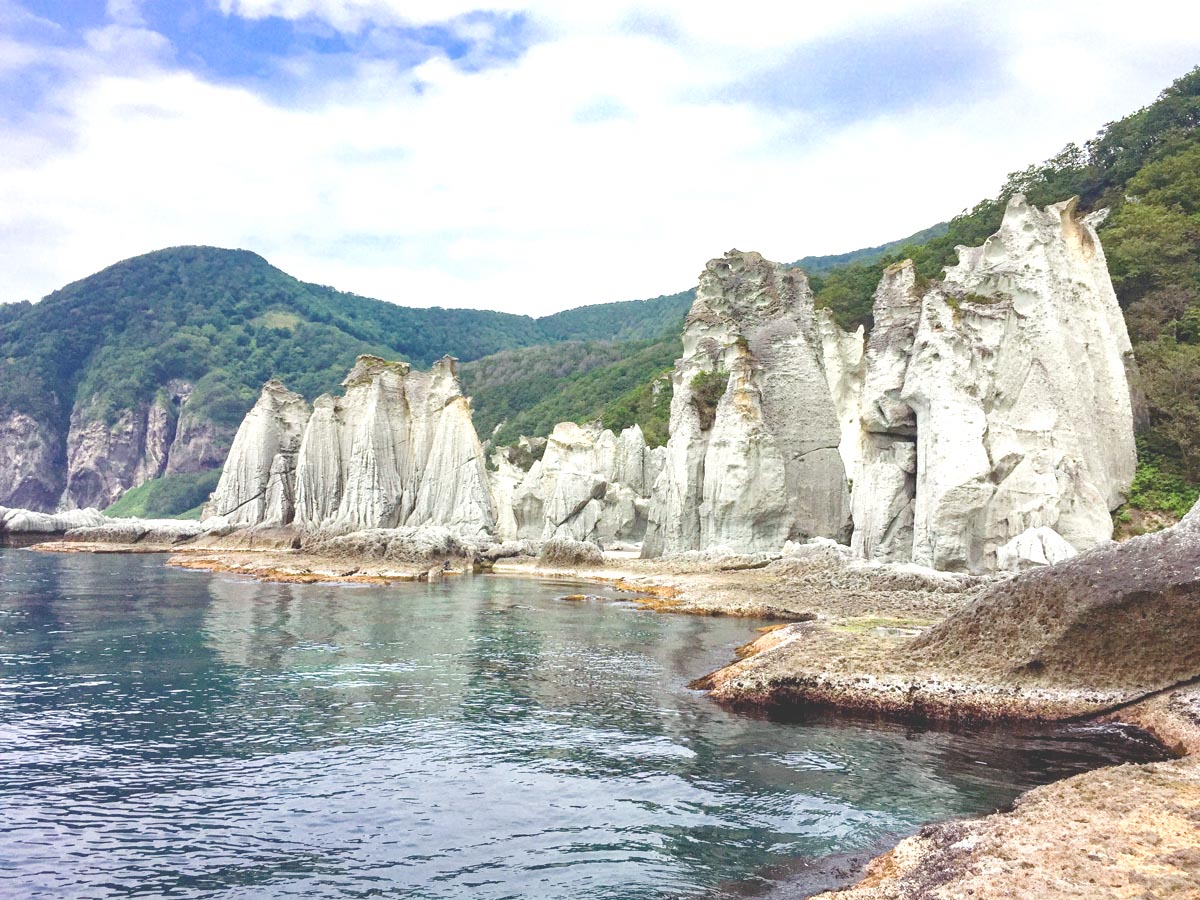Japan Solar Update: No.49 (June 12 ~ 16, 2023)
From February 7 to 17, 2023, the public call for the third round selection of Decarbonization Leading Areas was held, and 58 plans were received from 67 municipalities nationwide, including joint proposals.
<Key points>
- On April 28, the Ministry of the Environment (MoE) announced the results of the “Third round selection of Decarbonization Leading Areas
- Out of 58 plans by 67 municipalities, including joint proposals, 16 plans were selected, including those by Sai Village (Aomori Prefecture), Aizwakamatsu City (Fukushima Prefecture) and Nikkko City (Tochigi Prefecture)
- In the past three selections of the Decarbonization Leading Areas, plans of total of 414 MW of PV capacities were selected, with the breadkdown as follows; First round 150 MW, second round 139 MW, and third round 125 MW
As shown in Table 1, the Ministry of the Environment (MoE) announced the results on April 28, 2023 that 16 plans were selected. From this round of selection, “joint proposals by municipalities and private businesses” have become mandatory, and cooperation with energy companies, power transmission and distribution operators, construction companies, regional financial institutions, etc. has been strengthened.
Table 1 List of municipalities selected as the leading areas of decarbonization and their plans to install PV systems

As of May 19, 2023. Unofficially announced amounts are not disclosed.
Source: Materials of the third round selection of leading areas of decarbonization, publicly released, compiled by RTS Corporation.
In addition, the following four “priority selection models” have been newly adopted this time: 1) inter-policy collaboration in partnership with related ministries and agencies; 2) inter-regional collaboration through partnerships among multiple municipalities; 3) efforts to contribute to the regional version of GX (green transformation) and 4) initiatives that contribute to the reduction of greenhouse gases other than electricity in the civilian sector. The fourth round of selection is scheduled for around August 2023, and at least 100 locations will continue to be selected by FY 2025. As shown in Table 2, the PV power generation business is being adopted in all selected projects, with a total output capacity of 125 MW specified. The introduction of storage batteries has also been announced in all projects, but the introduction capacity is clearly indicated only at 10.6 MWh in Ikusaka Village, Nagano Prefecture.
Table 2 Installed capacty of PV module & Storage battery

* The PV output capacity is the aggregation of only for those whose output capacities are listed, and for projects where the area classification is not specified, the total PV output capacity in the related part is displayed as “included in XX”.
Note 1: Capacity by application: 1) Residential; 2) Private facilities; 3) Natural locations (ground, water, farmland, etc.), and 4) public facilities. Source: Materials of the third round selection of leading areas of decarbonization, publicly released, compiled by RTS Corporation.

